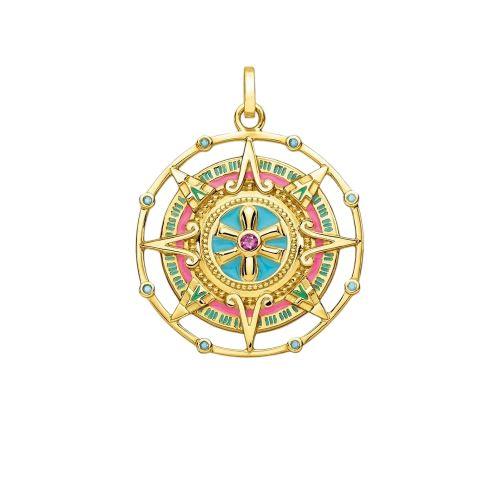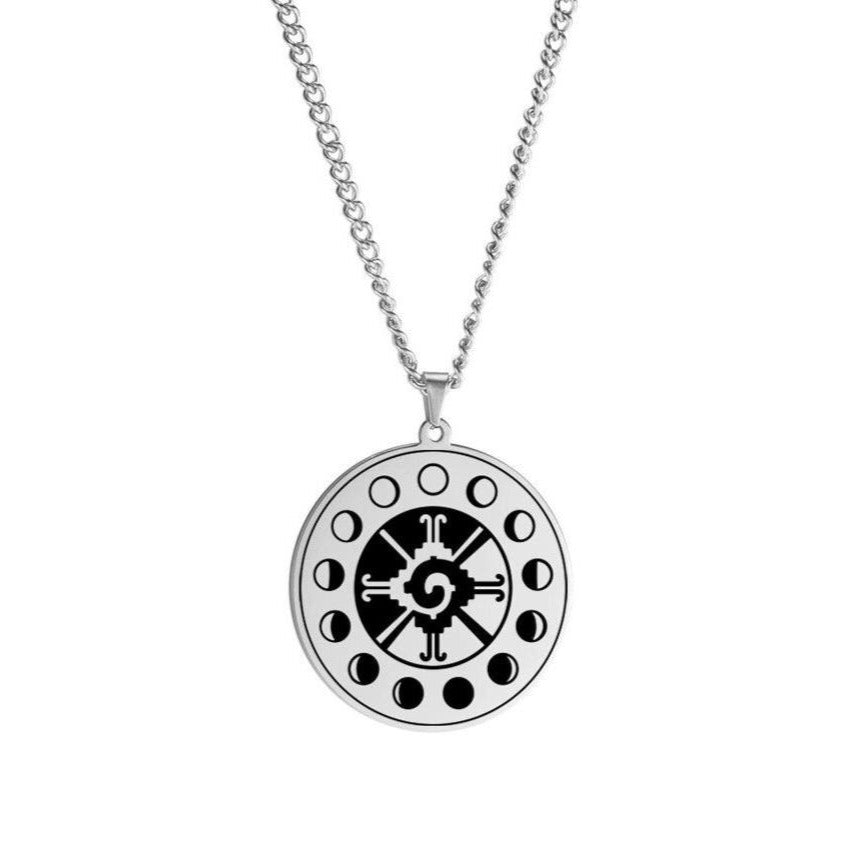Mayan Gods: Understanding An Ancient and Forgotten Mythology
Mayan mythology is undoubtedly one of the most misunderstood. However, it is very rich and, with its more than 3000 years of history, it has created legends and a vision of the world that deserve our attention!
This is precisely what we are going to do today by discovering the personality, history and hidden messages behind the main Mayan gods.
Contents :

Consideration of the Mayan Gods
Made up of a succession of cycles (through the succession of seasons, but also that of kingdoms and dynasties), Mayan history is fascinating and expresses the particularities of this unique people in the world.
Their belief system was based on a simple idea: a great universal force existed within every living being, thus connecting them to each other but also to the cosmos.
For the Mayans, this was true for men, animals, plants... but also spirits and divinities!
In fact, just about every Mayan god has positive aspects and darker ones because opposing energies conflict within them. The distinction between good and evil is therefore complex, a bit like in Mayan society itself.
It is this last point that will interest us today: by understanding the Mayan gods, we will be able to better understand the mythology and the world of life of this now extinct people.

Ixchel: Mayan goddess of the moon and fertility
Ixchel is a prominent Mayan goddess and, then as now, her cult may have been one of the most important in the central Americas.
To put it simply, this divinity controls the lunar cycles and the dance that the night star does around the earth. For a people passionate about astrology like the Mayans, this is already loaded with meaning.
Most importantly, Ixchel has the ability to bring fertility to both soil and women. The Mayans being great farmers, this ability to bring life to the soil made Ixchel even more important to them.
Mayan gods often have protective powers in addition to the areas of life assigned to them.
This is true for Ixchel, who was often asked to protect young children from disease.
As a fertilizing energy, the Mayan midwives also made it their guardian deity.
Last fun point to raise: the way Ixchel was represented depended on the lunar period.
When the new moon rose in the sky, the Mayans depicted it as a young woman.
Once the full moon passed, however, the goddess Ixchel was seen as an almost evil old woman, then linked to the destruction and death of nature.

Yum Kaax, god of plants and animals
Great Mayan god of nature, Yum Kaax governed plants, animals, trees and forests.
We could therefore say to ourselves that he must have been a sort of creator god. This is not entirely the case.
Yum Kaax was in fact the protector of nature, the one who allowed it to develop by watching over it.
It was therefore also a Mayan god linked to agriculture and, in a certain way, to the survival of humanity. During the first harvests of the year, the very first ears of corn were often burned as an offering to the god.
In short, Yum Kaax was considered a benevolent being thanks to whom the Mayan people were able to develop.
His negative side (because yes, remember, all Mayan gods have a minus a darker side) stems from the choices he sometimes has to make: when a hunter shoots an arrow in the direction of an animal, he can either guide it and thus feed the man's family, or make the animal furious to protect this life.
Before leaving to hunt, the Mayans often made sacrifices to Yum Kaax.
In terms of his representations, this Mayan god was seen as a handsome young man full of vitality above whose head sat an ear of corn.
To learn more about this Mayan god, here is a description of Yum Kaax from another angle.

Itzamná, the master of the sky and all knowledge
Itzamná is arguably the most important Mayan god in all of their mythology. In any case, it was clearly the most revered and the most present in religious ceremonies.
Direct son of Hanub Ku (the creator god, we will talk about him in a few moments), Itzamná is closely linked to Ixchel who we have just talked about.
He is in fact the master of the sky and all the phenomena that can take place there. We can easily see the importance it could have had for the Mayan priests, for whom astrology was of paramount importance.
Itzamná was also the Mayan god of science, knowledge and knowledge acquired through experience.
Most importantly, Itzamná possesses creative powers. Some legends present him as the progenitor of the very first human beings.
Mayan mythology also often tells us how his domination over the world stems not from imposed power but from knowledge of which he alone has the secret.
Truly, Itzamná is a Mayan god to lean into!

Hunab Ku, primordial Mayan god
For historians specializing in pre-Columbian cultures, the question of Hunab Ku is a thorny subject.
Almighty, he would have created the universe and everything in it (including the other Mayan gods, which would make him a kind of super-god).
For some, the cult of Hunab Ku is beyond doubt and, if we find fewer traces of it, it is quite simply because this Mayan god was only honored during grandiose festivals and therefore much rarer.
Others say of Hunab Ku that he was never really venerated, and even that he was an invention of Christian missionaries.
The reason behind this is quite simple: to distance the natives from the ancient Mayan gods, it was necessary to create an all-powerful god (comparable to the God of the Christians), have him worshiped and gradually replace all the others.
The few traces and representations of Hunab Ku are the main argument for this theory.
His detractors, however, have an answer to provide: this divinity represented a concept so powerful that it could not be depicted in physical form, hence the lack of pictorial traces.
There was in fact only one way to represent it: by its symbol, which you find here in the form of an amulet.

Kinich Ahau, god of medicine and jaguars
The title associated with Kinich Ahau is surprising to say the least…
So, the Mayan god of medicine was also linked to jaguars, quite dangerous animals after all?
Well yes !
Of all the gods and spirits in Mayan mythology, Kinich Ahau possessed the greatest healing abilities. Its priests also officiated as doctors, hence the great popularity of its cult at the time.
Besides that, Kinich Ahau also ruled over the jaguars. You should know that these animals were seen by the Mayans as the most sacred of all.
To them, jaguars were powerful carriers of magic and, although they sometimes attacked, seeing them near villages brought luck and protection.
Some stories explain to us how Kinich Ahau transformed into a jaguar once night fell to watch over men.
For the little ancedote, “Kinich Ahau” was a royal title worn by the sovereigns of the Mayan kingdoms. This was undoubtedly intended to mark their direct link with the sacred.

Chaac, Mayan god of rain and storms
The Mayans populated a territory with a tropical climate where rain fell (very) frequently… just like storms.
Given the power of these natural phenomena, it is entirely normal that a Mayan god was attributed to them. It was thus Chaac who fulfilled this function.
Obviously, one did not have to look far to associate this god with harvests and soil fertility.
In the early days of the Mayan civilization, Chaac was particularly revered, undoubtedly because men feared natural disasters more than anything.
Without developed construction techniques, a storm could mean ruin and even death for the community.
Often depicted with a large nose and two tusks on the front of his face, Chaac is certainly an ambivalent Mayan god, both nurturing and destructive.
In particular, traces of his cult were found on battlefields and in temples where human sacrifices were performed.

Kukulkan, the great feathered serpent
As this article which also deals with the subject shows us, most pre-Columbian religions tell us about the same mythological creature: a gigantic feathered serpent inhabiting the sky and possessing great magical powers.
To the Aztecs for example, this being was known as Quetzalcoatl. For the Mayans, it was more like Kukulkan.
A whole bunch of legends tell us how Kukulkan created water and wind with the simple movements of his body.
Others describe how he allowed plants to grow on previously barren soil by bringing it to life.
Unlike other Mayan gods, he was seen more as a monster than as a deity as such.
However, he was as revered as other major gods throughout Central America. This is so true that entire pyramids were erected in his honor!

Ah Puch, god of death and darkness
Most Mayan gods therefore have evil sides but also brighter ones.
With Ah Puch, it is quite complicated to see what positive things he can bring us.
Associated with death, darkness, destruction and the decomposition of corpses, we could compare it to the most terrible of demons.
However, it seems that the Mayans may have had a strange fascination with this god, a bit as if they were seeking through him to understand what death hid.
This may be quite difficult for us to understand, but pre-Columbian cultures mostly saw death as a passage and not an end in itself.
Furthermore, for new lives to be created, old ones must be destroyed.
Ah Puch was therefore paradoxically the Mayan god of death, but also that of births.
It therefore perfectly expresses the way in which the Mayans put good into evil, and evil into good, for each element of their mythology.
Many other minor Mayan gods
Here we have presented to you the main Mayan gods, those whose names you will hear most often and whose worship was the most important.
As in most mythologies, however, there are dozens (probably even thousands) of other minor deities who, even if they are less important, may have had an impact on the thought and imagination of the Maya.
We are therefore going to list them here (not exhaustive, of course) and present a summary of their responsibilities:
- Ah Cun Can: the god of war
- Ah Muzen Cab: the master of bees and beekeeping
- Ah Mun- God of Agriculture
- The Bacabs: four gods, each associated with a cardinal direction
- Balam: the protector of the fields
- Buluc Chabtan: the master of sacrifices
- Chicken: the guarantor of justice
- Cizin: the source of earthquakes
- Ek Chuaj: the leader of warriors and traders
- Huracan: the master of fire and storms
- Maximon: the god of travelers and evildoers
- Miam Cimil: the creator of diseases
- And many others !
This article is now finished. We sincerely hope that you will enjoy it and that you will have learned more about the Mayan deities.
If your curiosity is not yet satisfied, take a look at our collection dedicated to Mayan culture.
You will also find more information about this mythology in this summary of their beliefs or in one of these six books dedicated to the Maya.
Lucky charms featured in this article

Mayan Magic Amulet
See more
Mayan Amulet of Hunab Ku
See more

